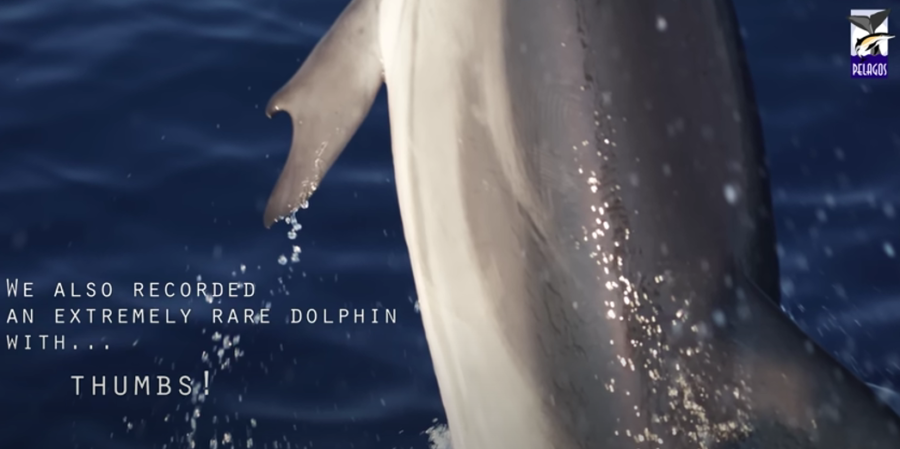Dolphin With “Thumbs” Discovered In Historic First

A dolphin with thumbs was discovered in the Gulf of Corinth in the Ionian Sea, according to the New York Post. What makes this discovery so baffling is the fact that out of the 1,300 striped dolphins that are stranded in the Greek gulf, there is only one dolphin carrying these extra appendages, making it a genetic anomaly. Though the dolphin thumbs don’t have any apparent use, it’s still a fascinating discovery, as it’s the first of its kind discovered in this region over a period of 30 years.
Scientists Find A Rare Dolphin With Thumbs

Of the 1,300 striped dolphins in this specific region, scientists have only discovered one that had thumbs. Alexandros Frantzis, the president of the Pelagos Cetacean Research Institute in Greece, at first thought he was witnessing a dolphin with injured flippers. But when his team came across the same dolphin a few days later, they were able to snap some close-up pictures, showing us the exposed thumbs. You can see the image of the rare dolphin from a YouTube video shared by the Pelagos Cetacean Research Institute.
Ancient Dolphins Did Have Thumbs

For those of you who aren’t up on your aquatic anatomy, it’s worth noting that modern dolphins don’t have exposed fingers or thumbs. They do, however, possess human-like forearms and mandibles that are leftover from past evolutionary iterations of the species. When dolphins were land-dwelling creatures over 50 million years ago, they had four legs, as well full sets of fingers and thumbs. And we’re not just talking about dolphins that had thumbs back in the day, but rather all cetaceans, including whales and porpoises. In other words, dolphins technically do have hands, but these days they’re encased in flippers, and hidden beneath a layer of blubber. In the case of this one dolphin in particular, its thumbs just so happen to be exposed, and scientists are trying to figure out why.
A Genetic Anomaly

The prevailing theory suggests that this dolphin’s thumbs are a genetic anomaly that was likely caused by constant inbreeding over time. At least that’s what Lisa Noelle Cooper, an associate professor of mammalian anatomy at the Northeast Ohio Medical University, asserts. During the dolphin’s early development stages, the flippers that were supposed to conceal its thumbs and hands never fully materialized, leaving the thumbs exposed even though the rest of its “hands” are hidden. But even though this dolphin has thumbs, it behaves normally within its pod. And the best news is that it’s not even considered an outcast or misfit by other fellow dolphins. Researchers have witnessed this unique dolphin swimming and playing with it’s thumb-less counterparts as if they were all best friends.
A Perfectly Healthy Dolphin

Since we’re talking about evolutionary leftovers found through a single birth defect, the dolphin’s thumbs have bones, but they are not operational. Aside from the obvious aesthetic anomaly, we’re dealing with an otherwise normal dolphin that won’t be walking on land, hitch-hiking, or determining the fate of a fallen warrior after an intense round of gladiatorial combat any time soon.
The Curious Nature Of Evolution

What’s most fascinating about this discovery is how genetics evolve over time. Modern dolphins simply have no use for opposable thumbs. But even though they had arms and legs millions of years ago, the genetic coding is still found deep within their DNA.











